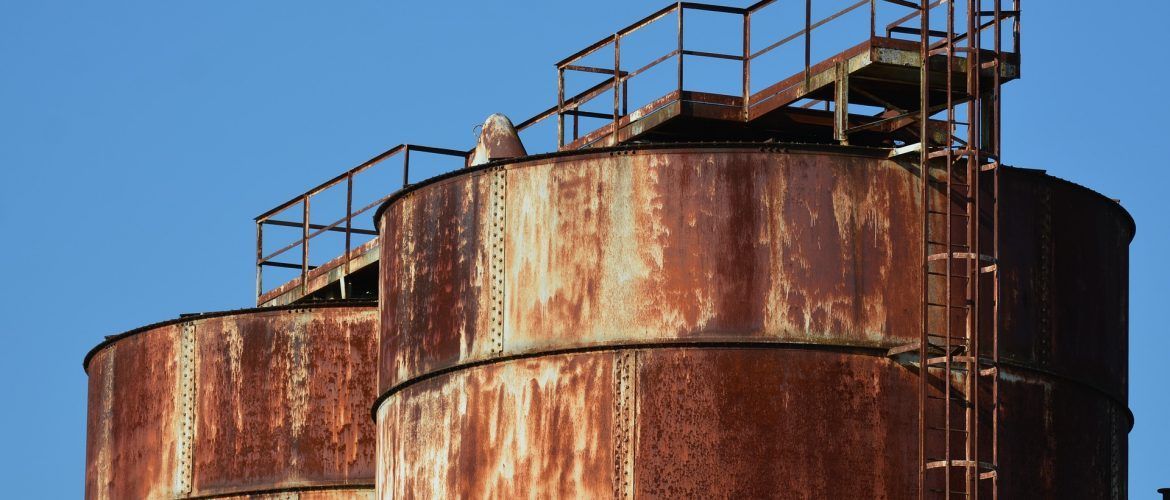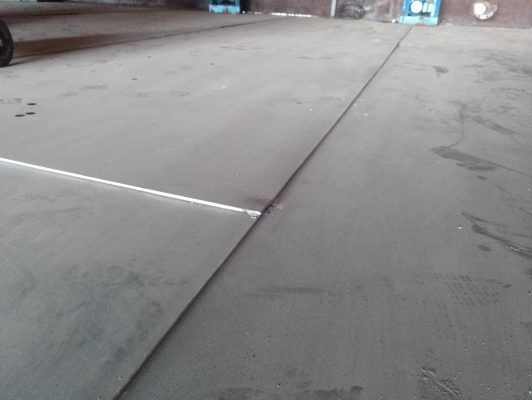Inspection and repair of Storage Tanks according to API 653
- Posted by: datienzae
- Category: Static Equipment

The API 653 standard was developed to guide during the inspection, repair, alteration and dismantling works of storage tanks designed and manufactured under API 650 or API 12C.
Contents are divided into the following sections:
- Scope
- References
- Definitions
- Suitability for Service
- Brittle Fracture Considerations
- Inspection
- Materials
- Design Considerations for Reconstructed Tanks.
- Tank repair and Alteration
- Dismantling and Reconstruction
- Welding
- Examination and Testing
- Marking and Recordkeeping
- Annexes
The Scope of the API 653 Standard is limited to the following tank components: foundation, tank bottom, shell, structure, roof, and nozzles to the face of the first flange.
For the assessment of degradation during service, additional normative must be consulted, such as API 579-1 / ASME FFS-1 (Fitness for Service). This normative defines the acceptance procedures and criteria to be considered in the failure analysis. It is important to be familiar with these regulations for an adequate evaluation of the tank.
When a physical modification to the tank is required, an assessment of the future integrity of the tank will be performed.
The main factors that must be taken into account during the tank integrity evaluation the ones associated with the stored product, the environmental conditions, materials, live loads, foundations, distortions of the existing tank, etc.
One of the most important sections of the API 653 standard is the one associated with inspection requirements. When scheduling and carrying out periodic inspections to “in service” storage tanks, the requirements indicated in Section 6 of the said standard must be considered.
What is the main purpose of in-service tank inspection?
The primary objective is to ensure the integrity of the tank during its future operating state. It will be necessary to carry out an external inspection that includes a visual inspection, an analysis of thicknesses employing ultrasonic tests as well as an inspection of the cathodic protection (according to API 651 standard).
In addition to external inspection, an internal inspection of the tank should be carried out, mainly to assess the integrity of the tank bottom.
The frequency of inspections will be based on the history of the tank in service, its corrosion rates, and the type of inspection considered.

Replacement of the bottom plates of a tank
The API 653 standard establishes the inspection frequency for storage tanks (both internal and external) based on different factors such as:
- The nature of the stored product.
- The results of the visual inspections.
- Corrosion tolerances and corrosion ranges.
- Preventive corrosion systems.
- Results of previous inspections.
- Construction, repair methods and materials.
- Loacation of the tanks, such as those located in high-risk areas.
- Potential risk of air and water contamination.
- Detection systems.
- Change in the operating mode (for example: fill cycle frequency)
- Local laws and regulations.
- Service changes.
The Appendix C of the standard API 653 includes a template that can be used as a checklist during a tank inspection.
Another of the large blocks that make up this standard is associated with tank repairs and alterations.
All modifications must be approved by an authorized inspector. Annex F of API standard 653 details the set of non-destructive tests to be performed in case of a repair or al alteration.
The different methods of repairing or altering a tank consist of:
- Removal or replacement of shell plate material
- Shell repair using lap-welded patch plates
- Repair of defects in the shell
- Alterations of tank shells to change shell height
- Repair of defective welds
- Repair of shell penetrations
- Repair of tank bottoms
- Repair of fixed or floating roofs.
Materials to be used in the different repairs must be the materials listed in the applicable standard.
If due to the bad condition of the tank its dismantling or reconstruction is required, section 10 of the API 653 standard indicates the applicable methods and the necessary tests for its subsequent commissioning.
If you want to know more:


 WhatsApp
WhatsApp